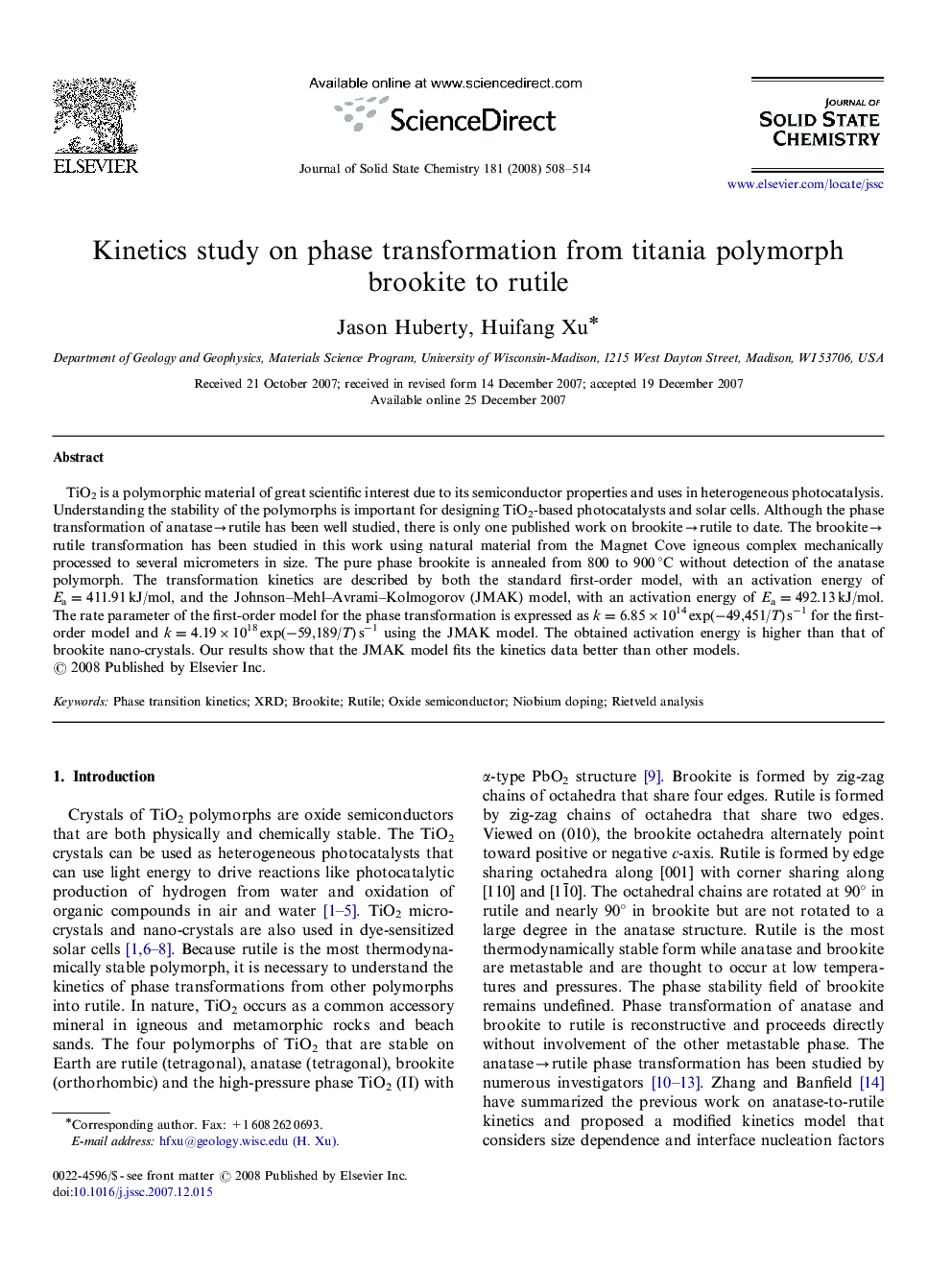| Article ID | Journal | Published Year | Pages | File Type |
|---|---|---|---|---|
| 1333717 | Journal of Solid State Chemistry | 2008 | 7 Pages |
TiO2 is a polymorphic material of great scientific interest due to its semiconductor properties and uses in heterogeneous photocatalysis. Understanding the stability of the polymorphs is important for designing TiO2-based photocatalysts and solar cells. Although the phase transformation of anatase→rutile has been well studied, there is only one published work on brookite→rutile to date. The brookite→rutile transformation has been studied in this work using natural material from the Magnet Cove igneous complex mechanically processed to several micrometers in size. The pure phase brookite is annealed from 800 to 900 °C without detection of the anatase polymorph. The transformation kinetics are described by both the standard first-order model, with an activation energy of Ea=411.91 kJ/mol, and the Johnson–Mehl–Avrami–Kolmogorov (JMAK) model, with an activation energy of Ea=492.13 kJ/mol. The rate parameter of the first-order model for the phase transformation is expressed as k=6.85×1014 exp(−49,451/T) s−1 for the first-order model and k=4.19×1018 exp(−59,189/T) s−1 using the JMAK model. The obtained activation energy is higher than that of brookite nano-crystals. Our results show that the JMAK model fits the kinetics data better than other models.
Graphical abstractThe transformation kinetics from titania brookite to rutile can be described by both the standard first-order model and the JMAK model. The obtained activation energy for micron-sized brookite crystals is much higher than that for brookite nano-crystals.Figure optionsDownload full-size imageDownload as PowerPoint slide
